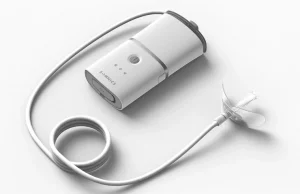
Obstructive Sleep Apnea (OSA) is more than just a disruptive sleep disorder; it’s a multifaceted chronic condition that can deeply impact a person’s daily life.
It’s an intricate disorder involving the upper airway, signaling complications within the soft tissue and the mechanics of breathing during sleep.
Its symptoms stretch beyond nocturnal breathing disturbances to daytime fatigue, cognitive challenges, and serious health complications. However, due to the diverse presentations and evolving nature of OSA, personalization in treatment is not only beneficial—it’s essential.
1. Understanding OSA’s Multifaceted Nature
At its core, OSA is not just about blocked airways during sleep. Factors such as weight, the structure of the soft palate, genetics, lifestyle choices, age, and even ethnicity can influence its manifestation. With such a vast array of contributing elements, a uniform approach to treatment may overlook the root causes or fail to relieve symptoms effectively for every patient. It becomes evident that a truly effective treatment regimen must be versatile and adaptable.
While CPAP devices have been the gold standard for years, the medical community acknowledges the need for alternative treatments. This realization stems from understanding the diverse patient phenotypes and the multifactorial nature of OSA.
2. The Multitude of Patient Phenotypes
Every individual’s experience with OSA is unique. From the structure of one’s airway and obesity to neuromuscular factors, the reasons behind OSA can be varied. Recognizing and addressing these distinctions is crucial. A treatment method that brings relief to one patient might be totally ineffective or uncomfortable for another.
3. Comfort: A Key to Treatment Adoption
Beyond the medical aspects of OSA lies another equally vital component: comfort. The most efficacious treatment can be rendered fruitless if patients find it intolerable. Physical, psychological, and emotional comfort are essential to ensure adherence to treatment.
This is where our innovative iNAP system shines. It’s crafted with a commitment to patient-centricity, focusing on addressing both the symptoms and ensuring enhanced quality of life for patients and their loved ones. Through its remote titration capability for pressure and intensity, and monitoring of treatment time and efficacy, it can evolve with the evolution of the OSA condition throughout the treatment duration.
4. The Evolution of OSA and Its Treatment
OSA isn’t stagnant. Its presentation can evolve due to factors such as age, weight changes, hormonal transitions, and lifestyle shifts. As the condition’s dynamics change, so must the treatment strategy. This underscores the importance of treatment titration — the periodic adjustment of treatment parameters to ensure continued efficacy.
The ability to fine-tune treatments according to a patient’s changing condition is at the heart of personalized medicine. For example, weight fluctuations or hormonal changes in a patient can necessitate adjustments in their treatment regimen. The flexibility of our iNAP system is a testament to its design, allowing for such necessary adaptations to ensure both comfort and medical effectiveness through monitoring and titration of pressure and intensity.
6. The Long-Term Vision of Personalized Treatment
An adaptable, personalized approach ensures better adherence and, consequently, improved health outcomes. By periodically reassessing and adjusting treatment strategies based on the patient’s evolving condition, we can proactively address challenges before they escalate. This dynamic approach can prevent complications arising from ill-fitting therapies and ensures that patients always receive the most effective care tailored to their needs.
Moreover, by prioritizing comfort, we can ensure that treatment is beneficial not just for the patient but also for their bed partners. It’s not just about alleviating symptoms; it’s about enhancing the overall sleep quality and life of everyone involved.
In Conclusion:
OSA is complex, requiring a comprehensive and evolving approach to treatment. Personalization, in this context, isn’t a mere buzzword; it’s an ongoing commitment to understanding each patient’s unique journey, anticipating their needs, and adjusting treatments accordingly.
At our medical device company, our commitment is unwavering. With the iNAP system, we offer more than just a remedy for OSA; we provide a promise of an evolving partnership. A partnership that assures every patient, and their bed partner, of restful sleep, both now and in the future.
Medical Disclaimer: The content on this blog should not be taken as medical advice or used as a recommendation for any specific treatment or medication. Always consult your doctor before taking a new medication or changing your current treatment.




